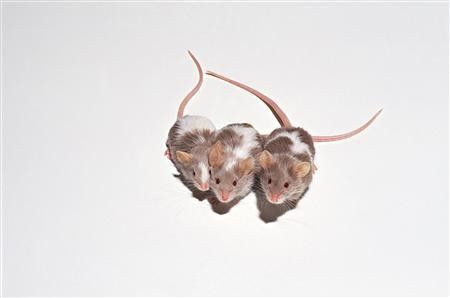Ovarian Stem Cells Holds Promise for Infertile Women: Study

Researchers at the Massachusetts General Hospital (MGH) have isolated egg producing stem cells from human ovarian tissues.
Scientists at the Vincent Center for Reproductive Biology, MGH used a special fluorescence-activated cell sorting protocol in mice models to grow new eggs from isolated stem cells.
The new study is seen as a precursor to solving fertility issues in women of reproductive ages. If made viable, the study could benefit young women undergoing cancer therapy and older women who have to resort to egg donors.
The current breakthrough challenges the widely-accepted notion that while men generate sperms throughout life, women are born with a fixed supply of eggs that deplete with age and are finally exhausted at menopause.
The current research, published in the March issue of Nature Medicine is a follow-up on an earlier landmark 2004 Nature paper suggesting that female mammals have the capability of producing egg cells throughout their adult reproductive stages.
The discovery of oocyte precursor cells in adult human ovaries, coupled with the fact that these cells share the same characteristic features of their mouse counterparts that produce fully functional eggs, opens the door for development of unprecedented technologies to overcome infertility in women and perhaps even delay the timing of ovarian failure, said Jonathan Tilly, lead researcher and Director for Reproductive Biology at the MGH Vincent Department of Obstetrics and Gynecology.
To examine their arguments, the researchers injected green fluorescent protein (GFP)-labeled mouse oocyte-producing stem cells (OSCs) into the ovaries of normal adult mice. Several months later, the recipient mouse ovaries showed the presence of follicles containing oocytes (immature egg cells) with and without the marker protein. Similar GFP-labeled and unlabeled oocytes were observed in cell clusters flushed from the animals' oviducts after induced ovulation.
The GFP-labeled mouse eggs were fertilized in the lab to produce embryos that went on to the hatching blastocyst cell reproductive stages, indicating potential for normal egg cell development.
According to Tilly, In this paper we provide the three key pieces of evidence requested by those who have been skeptical of our previous work.We developed and extensively validated a cell-sorting protocol to reliably purify OSCs from adult mammalian ovaries, proving once again that these very special cells exist. We tested the function of mouse oocytes produced by these OSCs and showed that they can be fertilized to produce healthy embryos. And we identified and characterized an equivalent population of oocyte-producing stem cells isolated from adult human ovaries, he added.
An earlier 2009 study from China had isolated OSCs based on cell-surface expression of a marker protein called Ddx4 or Mvh. While the Chinese team had transplanted OSCs into ovaries of mice previously treated with chemotherapy, the MGH-Vincent team showed that it was not necessary to damage the recipient mouse ovaries with toxic drugs before introducing OSCs.
These experiments provide pivotal proof-of-concept that human OSCs reintroduced into adult human ovarian tissue performed their expected function of generating new oocytes that become enclosed by host cells to form new follicles, said Tilly.
The team is seeking viable clinical applications such as developing human OSC banks that could enable these cells, to be frozen and thawed without damage. The team is also looking at technology to identify hormones and factors that accelerate the formation of oocytes from human OSCs. In addition, other applications could be to develop mature human oocytes from OSCs for in vitro fertilization, and other similar approaches that could enhance the outcomes of IVF and other infertility treatments.
Tilly explained in the paper that the problem with current IVF is that there aren't sufficient eggs available and if these renewable stem-cell based eggs are produced, it would be possible to generate many eggs as required per patient.
The researchers also explained that their current analysis of developing similar cells in humans have ethical and legal restrictions. Added to this are technical feasibility limitations due to the absence of validated protocols for maturing human embryonic cells in the current lab models.
While creating or fertilizing embryos for experimental purposes is banned in the U.S., BusinessWeek has reported that Tilly is collaborating with researchers at the University of Edinburgh, U.K., to determine whether the oocytes can be developed into fully mature human eggs for fertilizing.
© Copyright IBTimes 2025. All rights reserved.





















